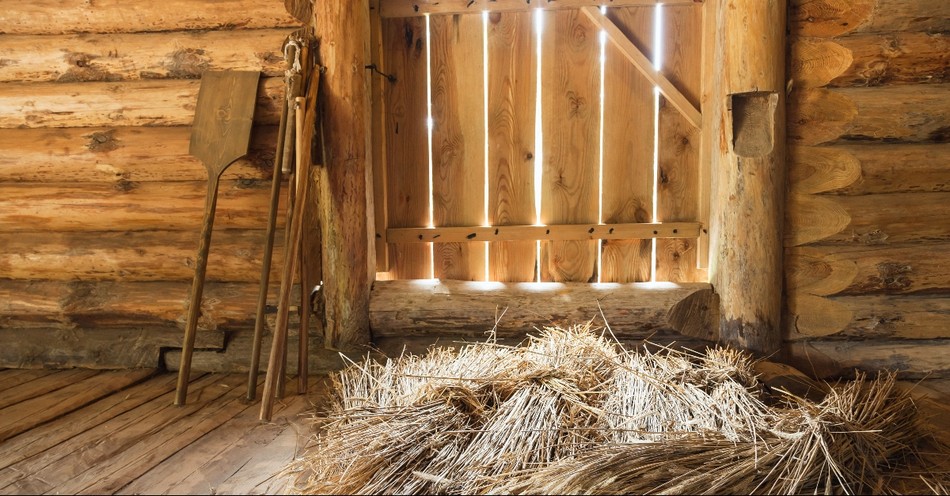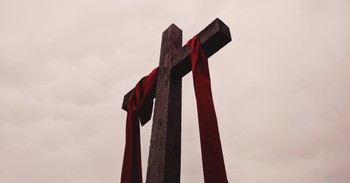The threshing floor is a significant symbol in the Bible, which is mentioned both in the Old Testament and in the New Testament. In the Old Testament, the threshing floor is used in the daily agricultural lives of men.
It is a flat surface, usually smooth, which is used during the harvest of grains. This space was used before equipment and machinery was invented. It was used to separate the grains from the chaff by manual separation.
Usually, the animals crush and break the sheaves of the grains on the trashing floor or people manually use sticks to break the sheaves apart. As a result, the grains would be separated from the husks.
The final separation would be done by tossing the grains upon the wind, thereby, finally separating those still with husk and those already edible. The process is called winnowing.
Although the threshing floor is an ancient way of processing agricultural produce, it is still very significant in our lives as Christians today.
The Old Testament mentions the threshing floor through the story of Ruth and Boaz, the direct descendant of our Lord Jesus Christ, and, because of this, the threshing floor is an important symbol of Christianity.
Ruth and Boaz
The story of Ruth and Boaz actually begins with Ruth married to someone else before being widowed. During this time, it was difficult for a woman to be a widow and survive on her own.
Usually, a woman with this kind of predicament would be redeemed by her husband’s nearest kinsmen, as it is written in Leviticus 25:25
“If one of your fellow Israelites becomes poor and sells some of their property, their nearest relative is to come and redeem what they have sold.”
Because of this instance, Ruth was encouraged by Naomi, her mother-in-law, to go down to the threshing floor as it is written in Ruth 2:20,
“The Lord bless him!” Naomi said to her daughter-in-law. “He has not stopped showing his kindness to the living and the dead.” She added, “That man is our close relative; he is one of our guardian-redeemers.”
Ruth was to go to the threshing floor and wait for Boaz to finish tending to the barley, and then lie down for the night at Boaz’s feet. This was a symbol of longing — to be redeemed by Boaz in this society.
It is written in Ruth 3:2-8 and 14-16,
Tonight he will be winnowing barley on the threshing floor. Wash, put on perfume, and get dressed in your best clothes. Then go down to the threshing floor, but don’t let him know you are there until he has finished eating and drinking. When he lies down, note the place where he is lying. Then go and uncover his feet and lie down. He will tell you what to do.”
“I will do whatever you say,” Ruth answered. So she went down to the threshing floor and did everything her mother-in-law told her to do.
When Boaz had finished eating and drinking and was in good spirits, he went over to lie down at the far end of the grain pile. Ruth approached quietly, uncovered his feet, and lay down. In the middle of the night something startled the man; he turned — and there was a woman lying at his feet!
So she lay at his feet until morning, but got up before anyone could be recognized; and he said, “No one must know that a woman came to the threshing floor.”
He also said, “Bring me the shawl you are wearing and hold it out.” When she did so, he poured into it six measures of barley and placed the bundle on her. Then he went back to town.
When Ruth came to her mother-in-law, Naomi asked, “How did it go, my daughter?” Then she told her everything Boaz had done for her and added, “He gave me these six measures of barley, saying, ‘Don’t go back to your mother-in-law empty-handed.’”
Ruth followed Naomi’s suggestion. During this time, women who lay for the night in the same room with a man would be automatically considered a wife, so Boaz and Ruth became a were married.
Ruth was redeemed from her predicament and thus created a long lineage of what would be the descendants of Jesus Christ.
Symbolic Judgment
The threshing floor, in this particular situation, was a symbol of judgment or the symbol of heaven and hell. In a threshing floor, the chaff symbolizes the destruction of the wicked according to Psalm 1:4, “Not so the wicked! They are like chaff that the wind blows away.”
This was prophesied by Hosea, the prophet in Hosea 13:3, as it is written,
Therefore they will be like the morning mist, like the early dew that disappears, like chaff swirling from a threshing floor, like smoke escaping through a window.
The New Testament attests to this in Matthew 3:12, as it is written,
His winnowing fork is in his hand, and he will clear his threshing floor, gathering his wheat into the barn and burning up the chaff with unquenchable fire.
The threshing floor was more of a symbol of the burning of evil in this world and it resonates with what happened with Ruth and Boaz.
Boaz was able to redeem Ruth and, in effect, the prophecy of Jesus happened. Ruth is one of the five women in Jesus’ lineage who is named.
The Separation Between Good and Evil
This brings us to the last meaning of the threshing floor, which is the separation between good and evil, in a spiritual sense. While the threshing floor is a physical space for chaffs and edible rice to be separated, it symbolizes far more.
In this particular story of Ruth and Boaz, it can be seen that Ruth symbolizes the believer, while Boaz symbolizes the redeemer — which is our Lord Jesus Christ. Boaz was a very kind man and a very generous one as well. Ruth trusts Boaz amidst her obstacles.
Their story is a reflection of what happens in our spiritual threshing floor and that is the fact that we are being guided and redeemed by Jesus Christ as long as we show humility in ourselves to ask for it.
We have to be reminded that we are the grains as well that are being divided by our nature. We sin and, therefore, we have husks, but Jesus Christ separates us from that sin through His Salvation.
In Hebrews 2:11-15, it is written,
Both the one who makes people holy and those who are made holy are of the same family. So Jesus is not ashamed to call them brothers and sisters. He says, “I will declare your name to my brothers and sisters; in the assembly I will sing your praises.” And again, “I will put my trust in him.” And again he says, “Here am I, and the children God has given me.” Since the children have flesh and blood, he too shared in their humanity so that by his death he might break the power of him who holds the power of death — that is, the devil — and free those who all their lives were held in slavery by their fear of death.
What Does This Mean?
The threshing floor is one of the most important aspects of the story of Ruth and Boaz and is also important to modern-day Christians. It emphasizes that there is a need for us to have a redeemer and that we can easily reach out to Him as long as we acknowledge our need.
Jesus Christ is our Redeemer in this threshing floor world. We are the rice with husks, and He redeems us by separating the husk from us so that we may be worthy to face our God the Father.
Photo Credit: ©iStock/Getty Images Plus/eugenesergeev
Glory Dy has been a content creator for more than 10 years. She lives in a quiet suburb with her family and four cats.



